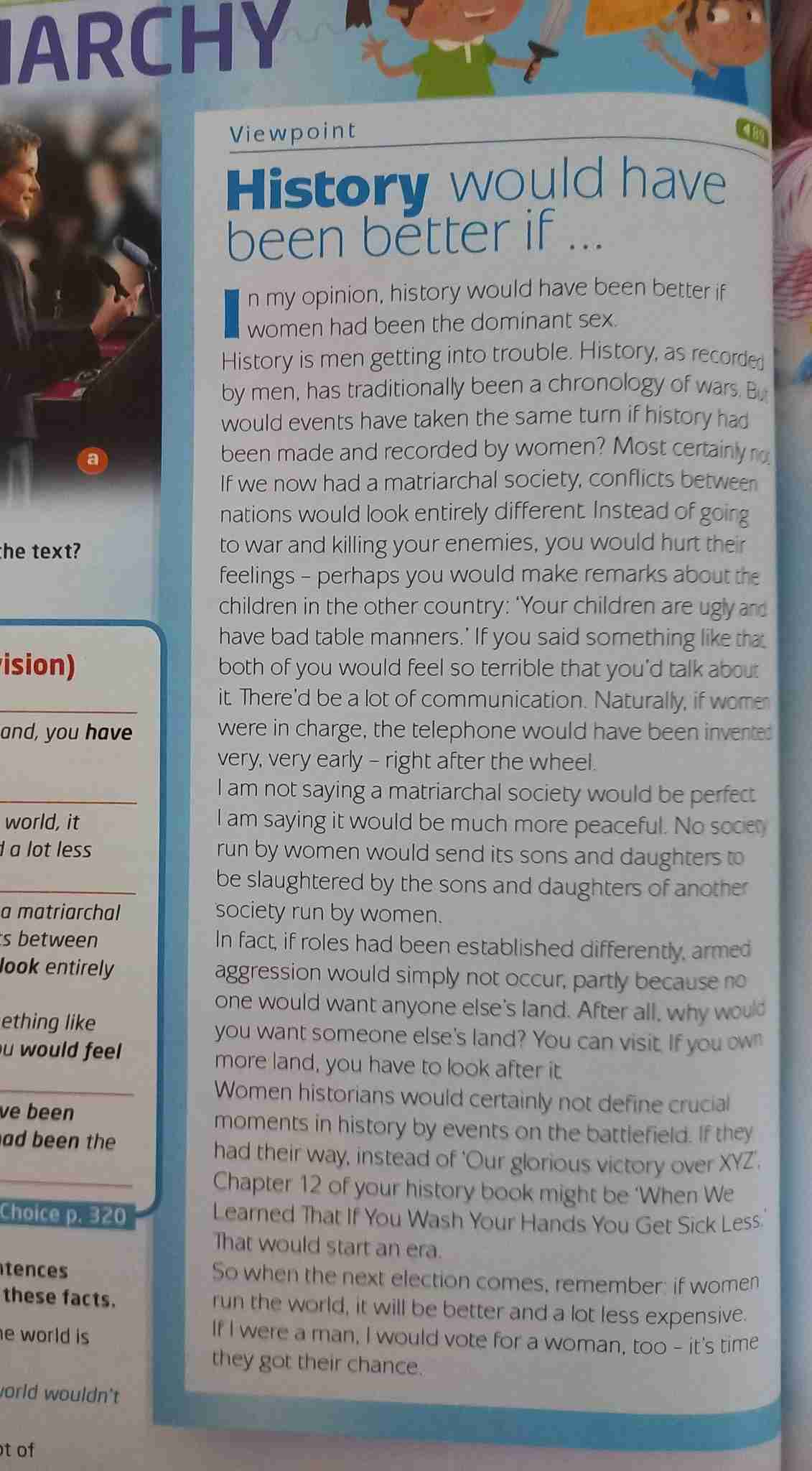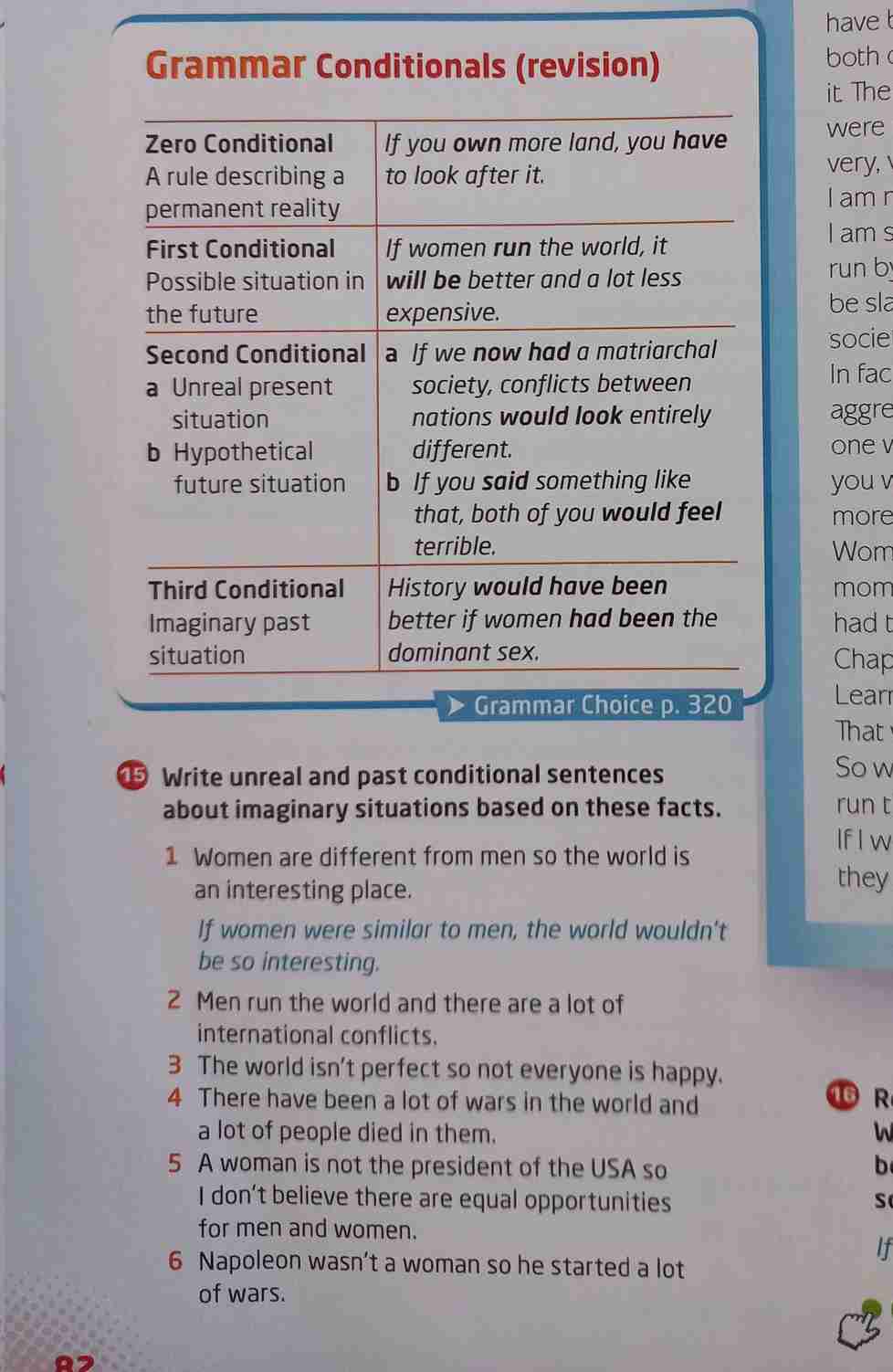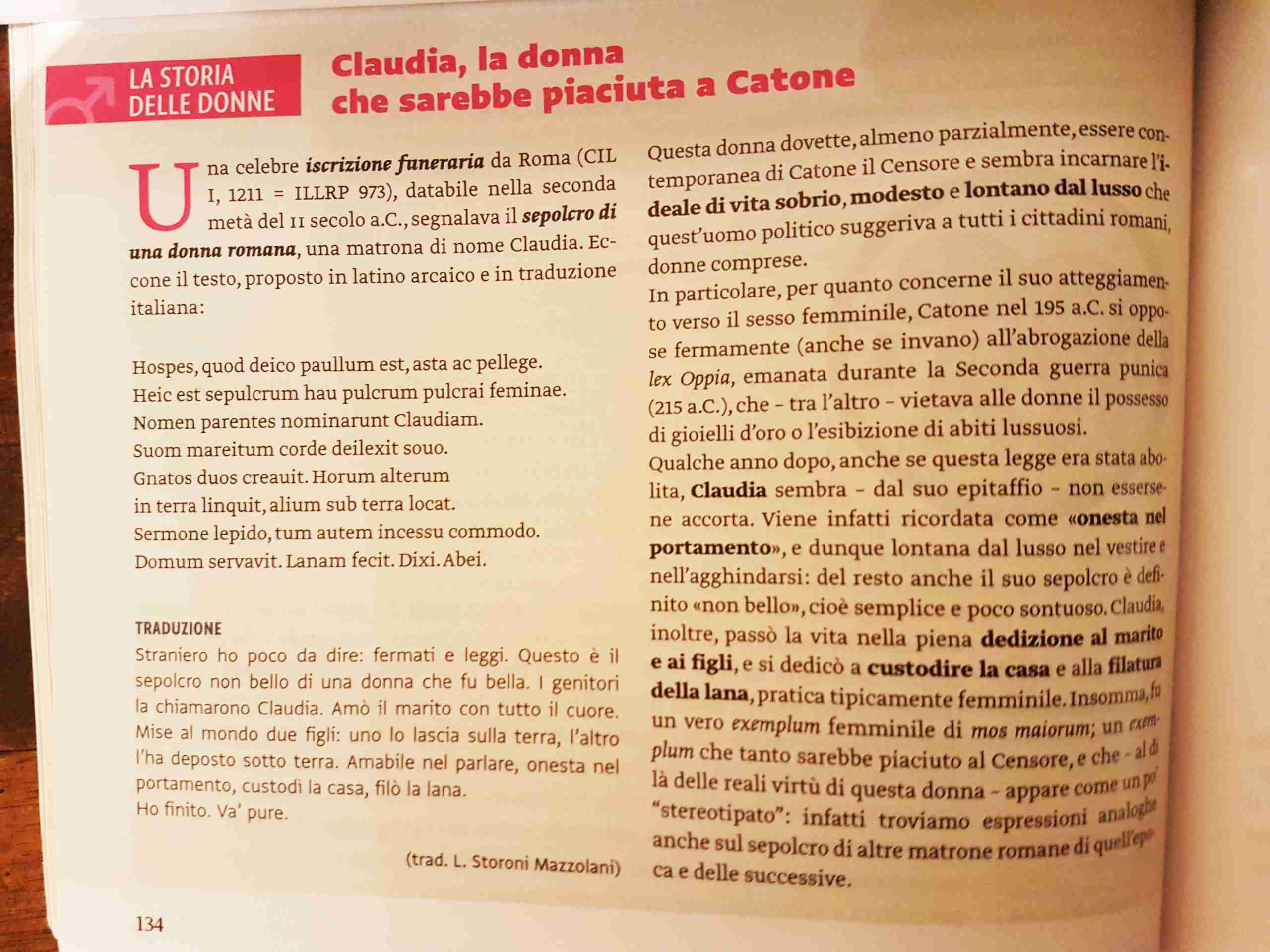Our recent article on the presence of indoctrination texts on the UN’s 2030 Agenda in school textbooks was of great interest. In our piece, we analysed in particular the subtle propaganda that primary school children were subjected to on the subject of inequality between men and women, with unverified and unverifiable statistics presented as fact to particularly impressionable minds in training. An attempt to mould generations of men crushed by an indistinct sense of guilt and generations of women carrying a sick sense of revanchism and an instinctive claim to privilege. The article apparently circulated widely, especially in schools. So much so that many, in addition to complimenting us for our “courage” (!), sent us other significant material from other higher school levels. Among the many, we chose two reports. The first comes from Dario (invented name), who is in his third year at a technical school in northern Italy. He sent us a photo of a page from an English textbook, “Best choice B2”, by Michael Harris, Anna Sikorzynska and Elizabeth Foody, published by the famous Oxford publishing house, which has a virtual monopoly on English textbooks for secondary schools. The page is this one:
A crazy content passed off as appropriate.
It starts with the concept that history made and told by men is a history of wars that, if the dominant sex had been female, would not have taken place. Everything would have been replaced by moral criticism such as: “your children are ugly and behave badly at the table”: the malaise generated by such phrases would have triggered useful discussions, capable of resolving conflicts. This is one of the reasons why, says the text, ‘if women were in charge, the telephone would have been invented much, much earlier, just after the wheel’. Everything hinges on the concept of how horrible violent conflicts are and how peaceful society would have grown if led by women. And even the telling of the story would have been different: not a terrible theory of battles and wars, but how everyone was taught to wash their hands so as not to catch diseases. Finally the recommendation: ‘when the next election comes, remember: if women led the world, everything would be better and much less expensive. If I were a man, I would also vote for a woman, it is time they had their chance’.
The text is clearly nonsensical, and any person with a minimum of knowledge and a bit of salt in his noggin immediately thinks that it is a provocation put there, perhaps to stimulate discussion and a conversation between professor and pupils. It is a frequent technique, also used at university level, to pose thorny issues (the death penalty, the value of fashion, raising children with corporal punishment, etc.) in order to trigger the mechanism of for and against (as in this university book) and induce students to discuss with passion while trying to speak the foreign language they are studying. When this happens, however, it is usually stated in the book, with titles like ‘start a discussion’, ‘dispute on’ and the like. Not here: it is presented as a “viewpoint”, directly related to the topic of conditional sentences in English. Dario also sends us the picture of the detail of the exercises, where through the grammatical questions the rambling concepts expressed in the box are further reinforced, a sign that what is present in the box is considered as real and appropriate content.
Ideas with a homeland and stateless ideas.
It is true that, as in other cases and for other subjects, much depends on the teacher’s use of the textbook. Dario tells us that it sometimes happens that the teacher (miraculously a man!) from time to time makes them discuss in English subjects taken from the book, but he also intelligently notes that the subject chosen is such as to implicitly legitimise only a certain type of opinion. Even if that text was put there on purpose to provoke a discussion, with all the absurdities it contains, in any case the choice denotes a specific orientation, aimed at making the arguments it presents pass as ‘reasonable’. The question in fact is: why propose such a text and not its opposite, where the same absurdities are said but with inverted genders? The objective of provoking discussion would be achieved anyway. Or, better still, why not present both positions, however deliberately extreme, and compare them? The answer is simple: because, in one way or another, even with meaningless extremes justified by the objective of grammar teaching, it is necessary to get across an unambiguous message, consistent with the dominant narrative that criminalises the male and victimises (or paroxysmally exalts, as in this case) the female sphere. With moreover the political-electoral conditioning at the end. Whatever the purpose of such a page, the result is to subliminally convey the message that certain ideas have a home and legitimacy, while others, diametrically opposed, absolutely do not.
The second example is sent by Cristiano (invented name) and comes from a scientific high school, also in northern Italy. It is a book of Latin literature, “Primordia rerum 1“, by Marzia Mortarino, Mauro Reali and Gisella Turazza, published by Loescher. At a certain point it talks about what is considered to be the first Latin prose writer, Marcus Porcius Cato, known as ‘the censor’ because he was very strict in punishing customs and habits that differed from the traditional Roman ones and tried to ban women from going around dressed in a way that contrasted with the proverbial sobriety dictated by the mos maiorum (the customs of the ancients). He is certainly a conservative figure, active in an important era but objectively ancestral when placed in the historical flow of Western civilisation. In any case, the book should analyse his literary contribution, limiting itself to a biographical framework where it might mention his severity and his conservatism, perhaps contrasting him with the noble families of his time who were much more progressive and modern than him (e.g. the Scipios, his bitter adversaries). But no. The book’s editor thought it appropriate to align himself with the diktats of political correctness, and the hook is there: Cato’s opposition to women’s flashy clothing. A mortal sin that justifies the implicit mockery and condemnation of a very ancient author. So the textbook comments on a giant of Roman literature with Claudia, an unknown Roman woman, and the inscription found on her tomb:
Latin literature also manipulated.
The story of Claudia and the inscription on her tomb have nothing to do with Cato and his role in Latin literature, it is quite clear. The inscription does not add anything to the framing of the figure of Cato. It only serves to say: you see, this Claudia was a cheap little woman, she was sober, honest in bearing, devoted to her husband and children, to looking after the house and spinning, and they even made her an unfortunate tomb. In other words, she was submissive and for this reason she would have been “liked” by that macho asshole Cato who wanted to conculcate the sacrosanct right of the matrons of Rome to dress as they liked. Not only that, this Claudia is a ‘stereotyped’ figure of a woman, because the same concepts appear in other inscriptions of other women. The truth is that in fact all women in ancient Rome were like Claudia, not a stereotype at all: they did what they were allowed to do in their time and there is no record of any of them expressing the desire to do what men did, i.e. to be slaughtered and disembowelled in the constant wars of the time, and being prevented from doing so. Here too the message is subliminal and very clear: there has always been patriarchy, which has always oppressed women, making them humiliated figures, always victims of the man who is always the abuser. It is a priori excluded that Claudia, and others like her, have lived their lives fully and happily. Even when it comes to Cato and Latin literature, there is room for indoctrination, even at the expense of ridicule.




